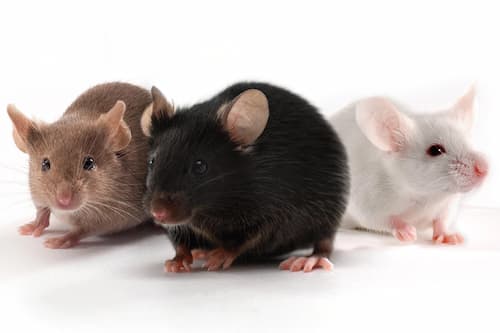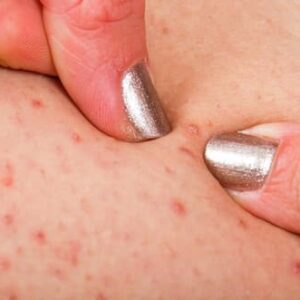
Getting rid of mice involves a combination of preventative measures, traps, and sanitation practices. Here’s a step-by-step guide on how to get rid of mice fast:
- Identify and Seal Entry Points:
- Inspect your home for potential entry points, such as gaps, cracks, or holes in walls, floors, and around pipes.
- Seal these entry points using materials like steel wool, caulk, or expanding foam.
- Remove Attractants:
- Keep food stored in airtight containers, and clean up crumbs and spills promptly.
- Avoid leaving pet food out overnight, and store it in sealed containers.
- Set Mouse Traps:
- Place snap traps or electronic traps in areas where mice are active, such as along walls and near entry points.
- Bait traps with peanut butter, chocolate, or other high-protein foods.
- Check and empty traps regularly.
- Use Glue Boards:
- Place glue boards in areas where mice are likely to travel.
- Check and replace glue boards as needed.
- Consider Humane Traps:
- If you prefer a catch-and-release method, use humane traps.
- Check the traps frequently and release captured mice far away from your home.
- Use Ultrasonic Repellents:
- Ultrasonic devices emit high-frequency sounds that are unpleasant for mice but usually inaudible to humans.
- Place these devices in areas where mice are active.
- Apply Natural Repellents:
- Use natural deterrents like peppermint oil or mothballs in areas where mice are present.
- Soak cotton balls in peppermint oil and place them in entry points or corners.
- Keep the Environment Clean:
- Regularly clean and declutter your home to eliminate hiding spots and food sources for mice.
- Dispose of garbage promptly and keep trash cans sealed.
- Consider Professional Pest Control:
- If your efforts are not successful or if the infestation is severe, consider hiring a professional pest control service.
- Professionals have access to a range of effective rodenticides and can provide more comprehensive solutions.
- Be Persistent:
- Mice are persistent, and it may take some time to eliminate them.
- Continue with preventive measures even after you no longer see signs of mice to avoid future infestations.
Remember to take a comprehensive approach by combining different methods for the best results. Additionally, it’s crucial to act quickly when dealing with mice to prevent a small problem from becoming a larger infestation. If you have concerns about using certain methods, or if the infestation persists, it’s advisable to consult with a pest control professional.
How To Get Rid of Mice Home Remedies
Using home remedies to get rid of mice can be effective, but it’s important to understand that complete elimination often requires a combination of methods. Here are some home remedies you can try to deter and repel mice:
- Peppermint Oil:
- Soak cotton balls in peppermint oil and place them in areas where mice are active.
- Mice are believed to dislike the strong scent of peppermint.
- Mothballs:
- Place mothballs in areas where mice are likely to travel.
- Be cautious with this method, as mothballs have a strong odor, and the scent can be unpleasant for humans as well.
- Ammonia:
- Mix ammonia with water and spray the solution in areas where mice are present.
- Ammonia has a strong odor that mice may find repulsive.
- Cayenne Pepper:
- Sprinkle cayenne pepper in areas where mice are active.
- The irritation from cayenne pepper may deter mice.
- Bay Leaves:
- Place bay leaves in cabinets, pantry shelves, and other areas where mice may be present.
- Mice are said to dislike the scent of bay leaves.
- Onion and Garlic:
- Place slices of onion or garlic in areas frequented by mice.
- The strong smell may act as a deterrent.
- Fabric Softener Sheets:
- Place fabric softener sheets in drawers, cabinets, and other hiding spots.
- Some people believe the scent repels mice.
- Vinegar:
- Mix equal parts of water and vinegar and spray the solution in areas where mice are active.
- The strong odor of vinegar may deter mice.
- Essential Oils:
- Use essential oils such as eucalyptus, tea tree, or citronella.
- Mix a few drops with water and spray in areas where mice are present.
- Ultrasonic Repellents:
- Use ultrasonic devices that emit high-frequency sounds, which are unpleasant for mice but generally inaudible to humans.
- Place these devices in areas where mice are active.
It’s important to note that while these home remedies may help deter mice, they may not provide a complete solution, especially for severe infestations. Additionally, it’s crucial to address the root cause by sealing entry points and practicing good sanitation.
Consistency is key when using home remedies. If the infestation persists or worsens, consider seeking professional pest control assistance for a more comprehensive solution. Keep in mind that the effectiveness of home remedies can vary, and what works for one person may not work for another.
How Do Exterminators Get Rid of Mice in Walls
Exterminators use various methods to get rid of mice in walls, depending on the severity of the infestation and the specific circumstances. Here are some common approaches exterminators may take:
- Inspection:
- Exterminators start by conducting a thorough inspection to identify entry points, nesting sites, and the extent of the mouse infestation.
- Sealing Entry Points:
- One of the primary steps is to identify and seal entry points that mice are using to access the walls. This helps prevent new mice from entering and also traps existing mice inside.
- Trapping:
- Exterminators strategically place traps in areas where mice are active, especially along walls, near entry points, and in locations identified during the inspection.
- Different types of traps, such as snap traps, glue traps, or electronic traps, may be used based on the situation.
- Baiting:
- Exterminators may use rodenticides or bait stations to attract and eliminate mice. These baits are strategically placed in areas frequented by mice but are secured to prevent access by pets or children.
- Use of Rodenticides:
- In some cases, exterminators may use rodenticides that can be placed in strategic locations within walls or areas where mice are active.
- It’s crucial to use these products cautiously and by safety guidelines to prevent harm to non-target animals.
- Tracing and Removing Nests:
- Exterminators locate and remove mouse nests within walls, which may involve cutting into the wall in some cases.
- Removing nests is essential to prevent further infestations and potential health hazards.
- Ultrasonic Devices:
- Ultrasonic-repellent devices may be used to emit high-frequency sounds that are unpleasant for mice but usually inaudible to humans.
- These devices can be placed strategically to deter mice from certain areas.
- Exclusion Measures:
- In addition to sealing entry points, exterminators may recommend and implement exclusion measures to make it difficult for mice to re-enter the building.
- Sanitation Recommendations:
- Exterminators may provide recommendations for improving sanitation, such as cleaning up food debris, keeping food in sealed containers, and eliminating clutter that provides hiding spots for mice.
- Monitoring and Follow-Up:
- After the initial treatment, exterminators may monitor the situation to ensure that the mouse population is effectively controlled.
- Follow-up visits may be scheduled to assess the success of the treatment and make any necessary adjustments.
It’s important to note that the specific methods used by exterminators can vary based on the circumstances of the infestation and local regulations. Additionally, working with a licensed and experienced pest control professional is advisable to ensure the effective and safe elimination of mice from walls.



